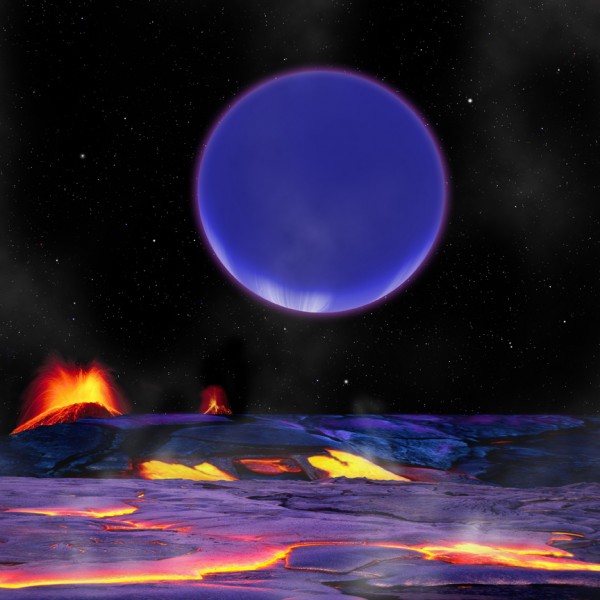In this artist’s illustration, an extrasolar gas giant planet – known to earthly astronomers as Kepler-36c – looms in the sky of its close neighbor, a rocky volcanic world called Kepler-36b. Astronomers at the Harvard-Smithsonian Center for Astrophysics (CfA) published a study about these two worlds on June 21, 2012. They say these worlds constitute closest two-planet system yet found. When the two worlds are closet, say the astronomers, the co-orbiting gas giant planet Kepler-36c would span three times more sky than a full moon does from Earth.

The astronomers say these two planets in the Kepler-36 system have repeated close encounters, experiencing a conjunction every 97 days on average. At that time, they are separated by less than five Earth-Moon distances. If so, these close approaches would stir up tremendous gravitational tides that squeeze and stretch both planets. These forces could promote active volcanism on Kepler-36b.
Astronomer Josh Carter of CfA said:
These two worlds are having close encounters.
Co-author of the study – Eric Agol of the University of Washington – added:
They are the closest to each other of any planetary system we’ve found.
Read more about this story from CfA
Submit your own Earth or night sky photos at EarthSky Community Photos.











